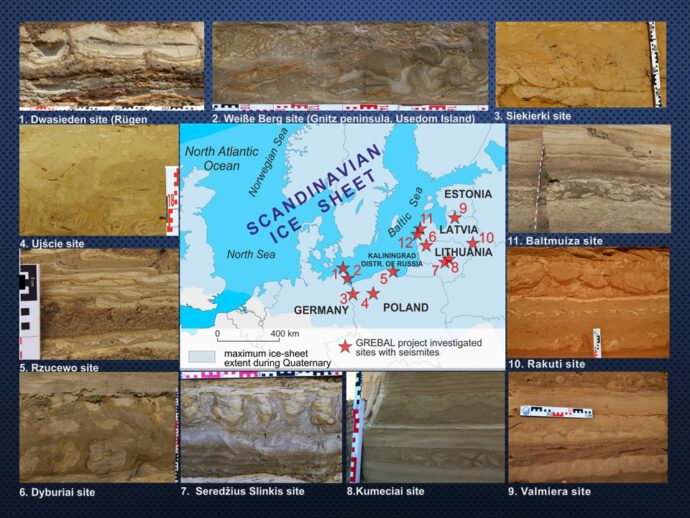The recognition of sedimentological traces of earthquakes in the form of seismites within Pleistocene sediments is the main objective of the GREBAL project (Recognition of traces left by earthquakes in Pleistocene sediments affected by glacio- isostatic rebound in the Baltic Sea Basin). The investigations focus primarily on Poland, Germany, Latvia, Estonia and Lithuania. Project leader Małgorzata (Gosia) Pisarska-Jamroży has summed up new results from this international research effort.
Results of sedimentological studies as well as stratigraphical and geochronological data in relation to the broader geological context led us to the following conclusions: 1) seismic activity did accompany Saalian and Weichselian glaciations (during or after the deglaciation and during ice-advance periods); 2) earthquakes caused by the reactivation of deeply-rooted pre-Quaternary faults due to glacially-induced stress state changes; 3) in some cases, glacial earthquakes caused (e.g. by large-scale stick-slip motion) are also discussed as a possible source of seismic activity.
Read more about the project and see some beautiful seismites here: https://grebal.amu.edu.pl/




Plaziat J.-C. | 2023-03-07|18:05 (UTC)
I am highly interested in your research on the late Pleistocene seismicity of isostatic trigger. I work since more than ten years on periglacial alluvial deposits of the Paris Basin showing intimate fracturation referrable, in my opinion, to the seismic late compaction resulting from water escape (and hydromorphic deformation)at the end of the SSD processes of major seims.
Most French quaternarists do not agree and I have not published anything on this Quaternary question but several papers on diverse Cretaceous and Cenozoic seismite cases in diverse environments with sand deposition (along 40 years of academic research).
I found the same conjugated fractutarion on one of the photos of load-cast (in sand) published by Van Loon et al (2015, fig 7). Very similar to the fracturation system of the Oligocene sands associated with dish str. I currently study especially.